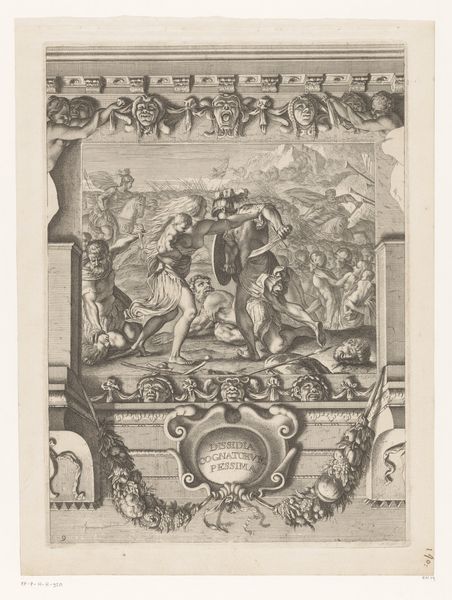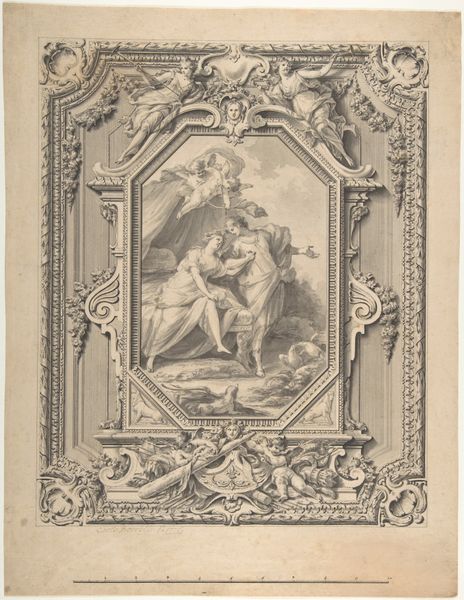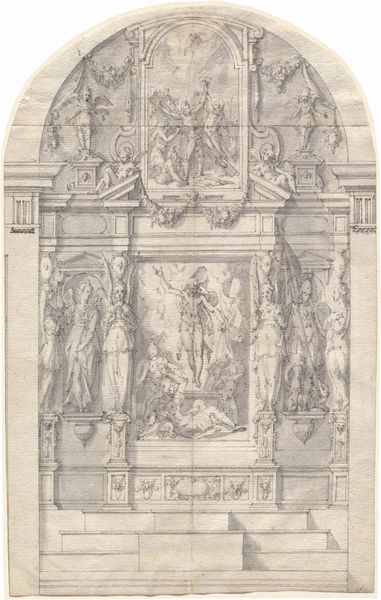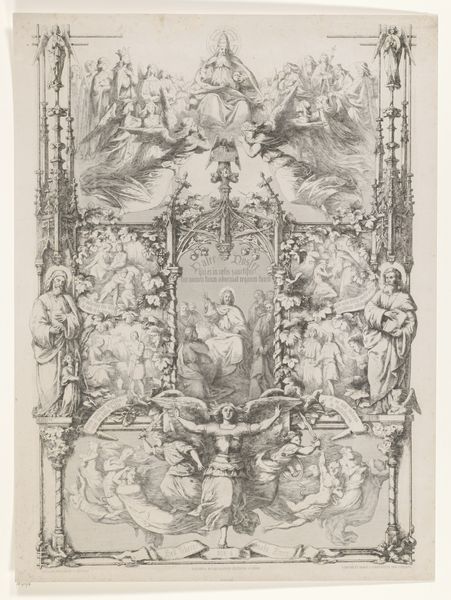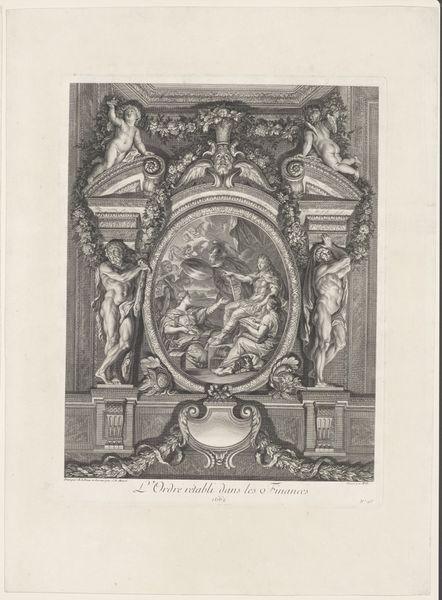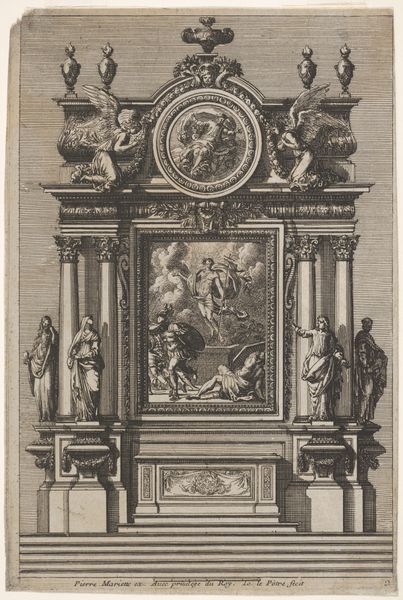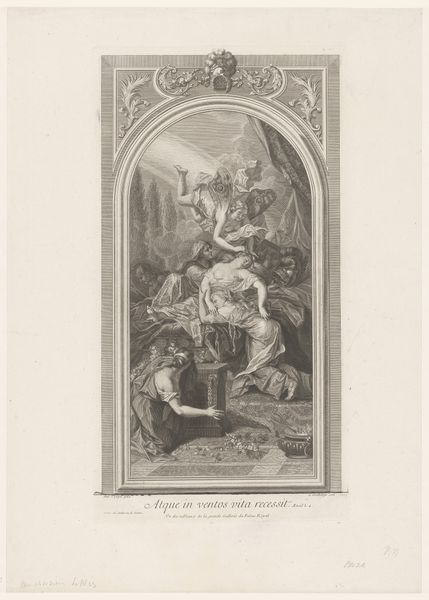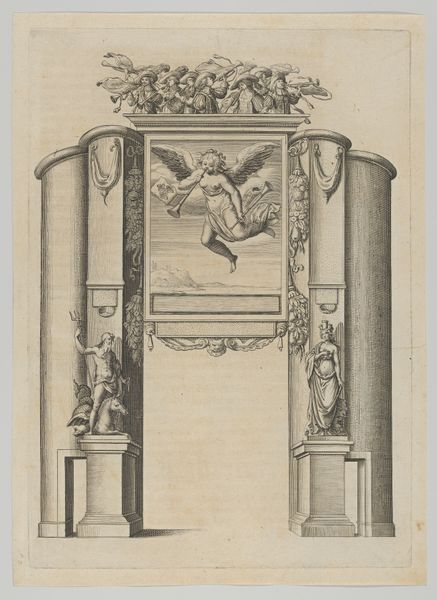
print, engraving
#
baroque
# print
#
landscape
#
figuration
#
traditional architecture
#
nude colour palette
#
history-painting
#
engraving
Dimensions: height 670 mm, width 462 mm
Copyright: Rijks Museum: Open Domain
Jean Louis Roullet created this print, "Cadmus slaying the dragon," likely in France during the late 17th century. It shows the Greek hero Cadmus locked in mortal combat with the monstrous dragon. But this isn't just an illustration of a classical myth; it’s a carefully constructed visual statement reflecting the cultural values of its time. The print uses classical imagery to legitimize power. The heroic Cadmus, a symbol of strength and virtue, can be read as an allegory for the French monarchy. The dragon, representing chaos and disorder, is vanquished, reinforcing the idea of royal authority. The inclusion of a portrait and allegorical figures suggests that this print might have been commissioned by a member of the aristocracy, seeking to associate themselves with the virtues of classical heroes. Understanding the social and institutional context of prints like these is key to unlocking their meaning. By examining period documents, such as commissioned records, inscriptions, and related artworks, we can better understand their role in shaping the cultural landscape of the past.
Comments
No comments
Be the first to comment and join the conversation on the ultimate creative platform.
